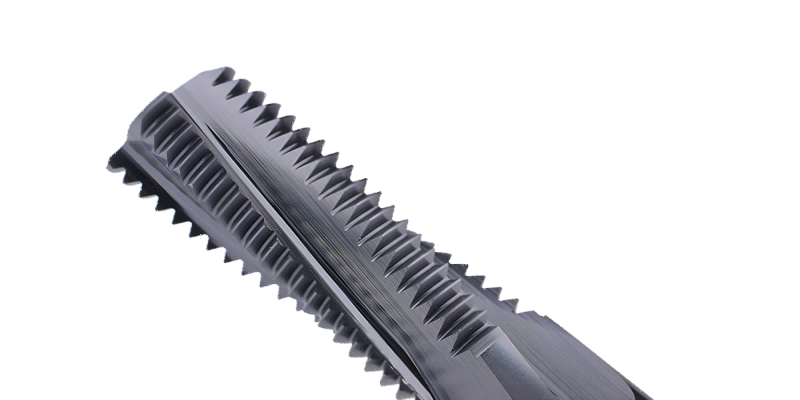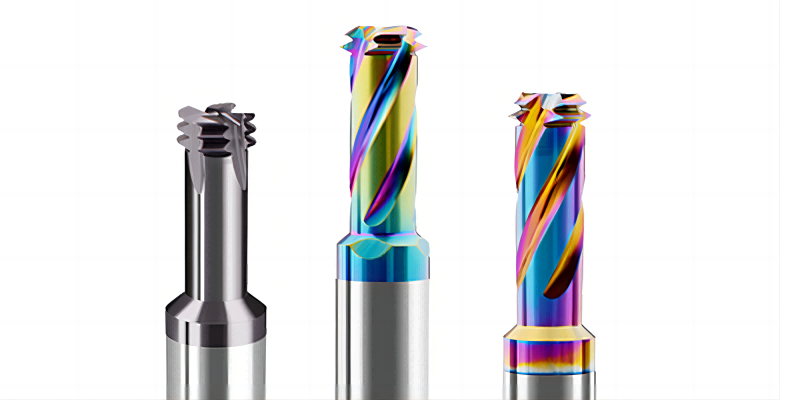Thread milling cutters and taps are both tools used for machining threads, but their structures and usage methods vary greatly. Thread milling cutters are suitable for batch processing, with high efficiency but slightly lower accuracy; Tap is suitable for individual and small batch heavy production, with high accuracy but low efficiency. This article provides a detailed comparative analysis of these two tools from multiple perspectives, including structure, usage, advantages and disadvantages, in order to provide readers with reference for selecting the correct tool.
1.Structural comparison
The structure of thread milling cutter is to carve the shape that conforms to the thread specification and geometric shape on the milling cutter, and then use the milling machine to process the threaded hole of certain specification. The tap is used to cut threads that meet specifications and geometric shapes on the outer circle or inner hole geometry. It is used manually or mechanically. From this, it can be seen that the characteristic of the thread milling cutter is suitable for mass production, while the tap is suitable for individual processing.
2.Comparison in use
The use of a thread milling cutter requires reinforcing the workpiece on the milling machine and machining a certain specification of threaded holes using spiral cutting. When making threaded holes, the greater the distance between the tool and the cutting surface, the lower the accuracy. Due to the inability of the thread milling cutter to cut the outer diameter, it is necessary to use an outer diameter tool when machining the outer diameter of the thread. The use of thread milling cutters can greatly improve production efficiency, but the accuracy is slightly lower. The tap is used to cut threads that meet specifications and geometric shapes in the hole. The cutting force of the tap is relatively small, and one thread is manually operated, which can process the outer diameter and aperture of the thread. Due to manual operation, the machining accuracy is high, but the efficiency is low.
3.Comparison of advantages and disadvantages
The advantages of thread milling cutters are: high processing efficiency, suitable for mass production.
The disadvantage is that the accuracy is slightly low, and it cannot process small aperture threads and outer diameter threads.
The advantages of tap are: high machining accuracy, suitable for small batch production.
The disadvantage is: low efficiency, only suitable for processing smaller threads.
4.Comparison of usage scenarios
Thread milling cutters are suitable for batch production of large-sized threaded holes. The use of thread milling cutters can improve production efficiency and shorten production cycles. Taps are suitable for processing small amounts and sizes of threads, and are suitable for manual and mechanical operations.
Post time: Jul-24-2023


